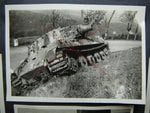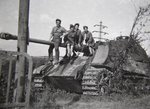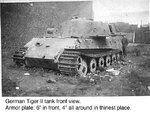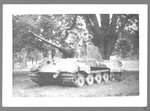Just to add my two-pennyworth - how many of these Tigers were actually mechanically functional when they were destroyed? It strikes me that Tigers particularly were mechanically rather fragile, and prone to engine and transmission problems. That alone makes the tank-to-tank kill ratio suspect, as a sitting target is an easier one, not to mention that retreating crews might deliberately destroy their vehicle rather than let it fall more-or-less intact into Allied hands.
It is rather difficult to say what "better" actually means in this context. If we are talking about one-on-one combat for a limited period of time - Tiger, easily - or massed armour assaults, in which case you have to admit that the sheer numbers of adequate vehicles did for the low numbers of very dangerous ones.
Which makes you wonder about the NATO doctrine of quality versus quantity in the 1970s - 1980s Third World War in Germany projections.
It is rather difficult to say what "better" actually means in this context. If we are talking about one-on-one combat for a limited period of time - Tiger, easily - or massed armour assaults, in which case you have to admit that the sheer numbers of adequate vehicles did for the low numbers of very dangerous ones.
Which makes you wonder about the NATO doctrine of quality versus quantity in the 1970s - 1980s Third World War in Germany projections.





